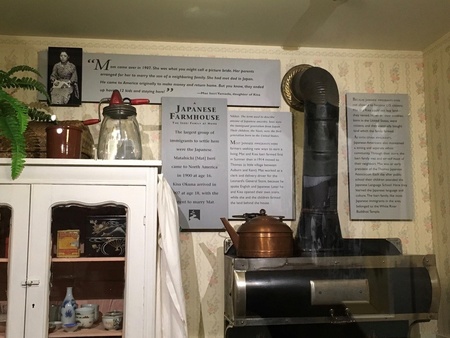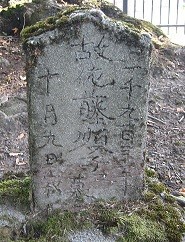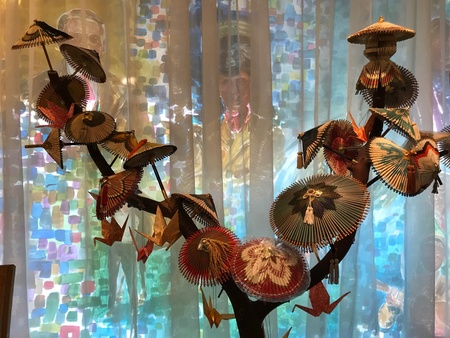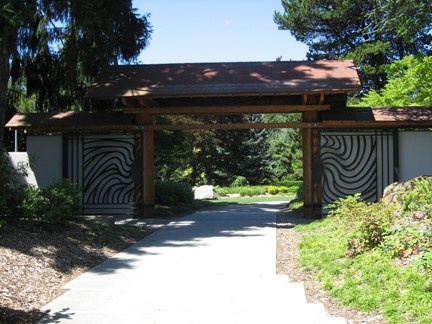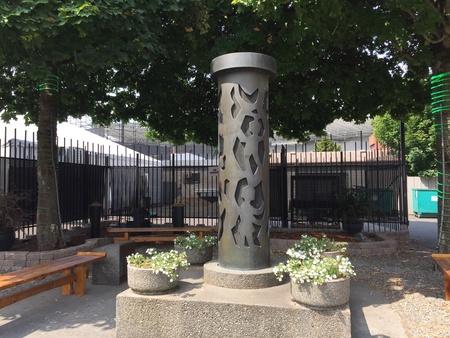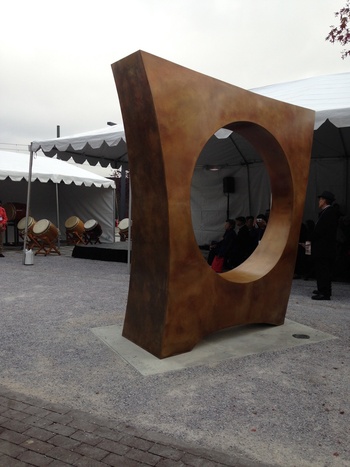In the Pacific Northwest, there are a couple of famous sites related to Japanese American history, such as Seattle’s Panama Hotel (made famous by Jamie Ford’s novel Hotel on the Corner of Bitter and Sweet), where Japanese Americans stored their belongings during their mass incarceration. Locals from Seattle may know about the Aki Sogabe murals in Pike Place Market, a tribute to the Japanese American farmers of the state. And then there is Bainbridge Island’s beautiful National Parks monument, Nidoto Nai Yoni, which I described in 2014 for Discover Nikkei.
However, given my adopted state’s multifaceted Japanese American history, with a 100+year old record of Japanese arriving, I have discovered that there are many more sites to explore. Some Japanese and Japanese Americans have even returned to Washington in search of these sites and roots; families have brought old photographs to the Auburn Pioneer Cemetery, Neely Mansion, and the Fife History Museum, described below.
Here are a few of my favorite sites—as well as a few sites I have not yet visited—in no particular order.
1. Vashon Island
This island has a compelling, if not-so-well-known, history stretching back to the late 19th century when the first Japanese immigrants appeared via steamship. Japanese Americans cleared the land for farming, developed close-knit relationships with each other and with the Islanders, and contributed to the larger community. The Mukai farmstead and estate is a wonderful place to visit when it is open to visitors; its former owner became famous for patenting a new way to storing and shipping strawberries.
I’ll be writing more about Vashon Island, but for now, readers may be interested to know about the Vashon Heritage Museum exhibit Joy and Sorrow [Hikikomogomo], an exhibit created by the Island’s Japanese American Research Project. The exhibit will be up from April 6 until September 24, 2018. I have been honored to research and write about the Island’s Japanese American farmers for a different project, which I’ll discuss in next month’s essay. The Island’s Japanese American Research Project created the exhibit, and I’m sure it will be fascinating. Watch for next month’s essay here and at the Washington Trust for Historic Preservation’s site, RevisitWA.
2. White River Valley Museum, Auburn.
This is one of the best local history museums I have visited—and there are not just one, but several exhibits dedicated to Japanese American history. Though the temporary Handmade in Camp exhibit that I described for Discover Nikkei is no longer there, other exhibits still remain. The Issei farmhouse exhibit reminded me so much of my Nisei auntie’s house, and I especially recommend a visit for any Nikkei with agricultural roots.
3. Pioneer Cemetery, Auburn
This cemetery involves the roots of Seattle-area Japanese American families. In 2008, Kristy Lommen’s daughter was working on a high school project for her Japanese class. As a part of the project, her daughter was required to do some volunteer service for the local Japanese community. She decided to create a website for Auburn’s cemetery. “I researched and wrote five individuals of people buried there” says Lommen now, “[and my daughter] used her web design skills, and it grew from there. We now have fully transcribed and translated the tombstones (most in Kanji) as well as adding many more biographies and photos. My daughter is long since graduated (both high school and college) but we maintain the site, which seems to be appreciated by the families associated with it.”
4. Seike Garden, Highline/SeaTac
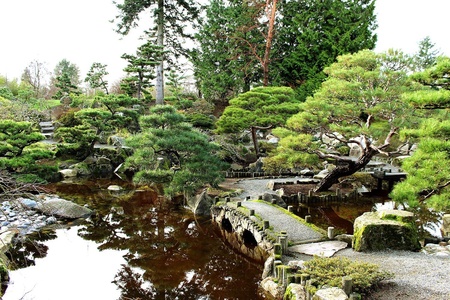
This Japanese garden is situated in the town of SeaTac, between Seattle and Tacoma, beginning as a memorial to Nisei 442nd soldier Toll Seike. It has a lovely well-documented history, including and before its construction in 1961. I hope to visit this site soon. The garden’s website has a lot of background information, as well as this Seattle Times article.
5. Japanese American Issei Pioneer Museum, Hansville
This is not a publicly funded museum, but a privately collected assortment of books, newspapers, objects, documents, memorabilia, and photographs curated and preserved by Mr. Yoshiaki Takemura, originally begun in California in 1976 and moved to Washington in 2004. Some items are in Japanese and others in English. According to the website, it is a museum dedicated to Nikkei history and Issei immigration, dedicated to the Issei pioneers. At a brief glance, some of the highlights of the collection include a newspaper from the 1860s, as well as Japanese language books and English newspapers from the Manzanar and Tule Lake concentration camps.
Seattle poet Lawrence Matsuda recommends a visit but cautions that calling ahead is important for two reasons: first, make sure that the museum is open, and second, to receive good directions to the site. I hope to visit it someday. For interested visitors, Mr. Takemura’s website about the collection is in Japanese and English.
6. Neely Mansion and Hori Bathhouse, Auburn
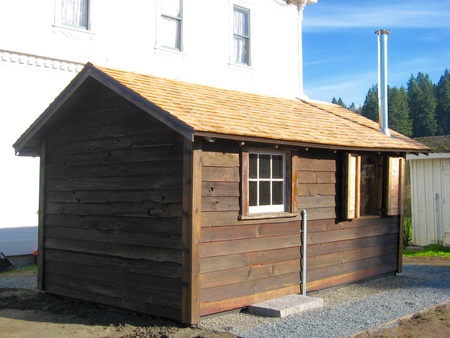
I have already written about the Neely Mansion Association and the Hori Bathhouse for Discover Nikkei in 2015, but since then the bath house reconstruction has been completed. It’s beautiful, and I recommend a visit to this lovingly preserved site of several layers of immigrant history.
7. Fife History Museum, Fife
The rich multicultural history of Fife is still being told, as I mentioned in March 2018, but there are many artifacts related to Japanese American history at this small house museum.
8. Japanese Americans of Spokane Tour, Spokane
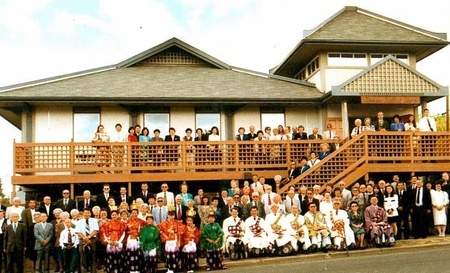
According to this informative essay on HistoryLink (the state online encyclopedia), Spokane holds a somewhat unusual place in Japanese American history. The population of the town’s area called “Japanese Alley” swelled in the early part of the 20th century, declined with restrictions on immigration, then nearly tripled during World War II because it was outside of the military exclusion zone and became a refuge area for Japanese Americans. The community struggled with each of these changes, but continues to hold events to this day.
The Spokane Historical Society has created a self-directed tour of Japanese American-related sites in the city, including small businesses, the Buddhist Temple, the Methodist Church, and farms. I have not visited Spokane to take this tour yet, but the tour itself looks promising.
9. Yakima Valley Museum, Yakima
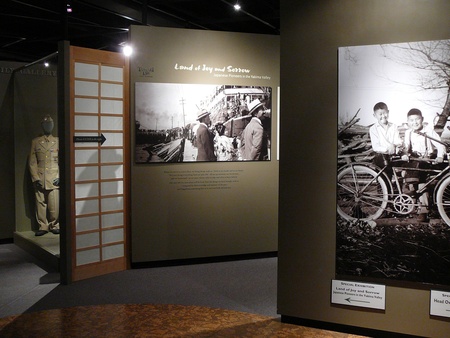
Although I have not visited this museum yet, its permanent Japanese pioneer exhibit comes highly recommended by Discover Nikkei reader Greg Mizukami. For interested readers, Discover Nikkei has published several related stories by Tammy Ayer about Yakima’s Japanese American history.
10. Kubota Garden, Seattle
This “American Japanese garden” lies nestled in south Seattle, blending native Northwest plants with traditional Japanese garden design. It’s a hidden treasure, as I mentioned for Discover Nikkei in 2016. I hope to visit this garden again someday and explore more of its 20 acres.
11. “Harmony,” sculpture by George Tsutakawa, Puyallup.
The Washington State Fairgrounds is actually home to several important events in Japanese American history: the creation of “Camp Harmony,” the state’s only assembly center during World War II; the very first Day of Remembrance in 1978, and the installation of this sculpture by renowned sculptor George Tsutakawa. In commemoration of the 75th anniversary of the signing of Executive Order 9066, the Puyallup Valley JACL created a documentary about Camp Harmony called “The Silent Fair,” which is available for purchase.
12. “Maru,” sculpture by Gerard Tsutakawa, Tacoma
Installed in 2014, this sculpture (with interpretive signage) is dedicated to the now-demolished Japanese Language School in Tacoma. I’ve written a lot about Tacoma for Discover Nikkei, but want to point readers to the free phone “app” that provides a tour of Tacoma’s Japantown. “Maru” is located at the UW Tacoma Prairie Line Trail, corner of S. 17th Street and Pacific Avenue in Tacoma.
13. Lewis County Historical Museum, Chehalis
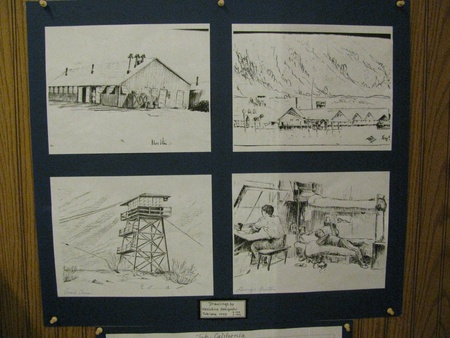
A small population of Japanese Americans lived in Lewis and Pacific Counties, located in Eastern Washington. The Issei who arrived in this area often worked in the mills; they and their families were sent to Tule Lake during World War II. According to Jason Mattson, director of this museum, the larger temporary exhibit for the area’s Japanese Americans in Eastern Washington has been dismantled, with the objects being returned to community and family members. However, a smaller exhibit remains with photographs and a plaque, dedicated to the Japanese Americans who were incarcerated during World War II.
14. The Nisei Veterans Memorial Hall, Seattle
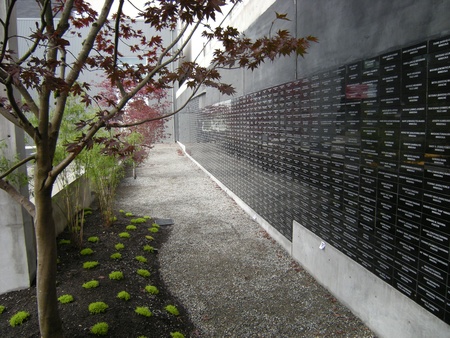
The Nisei Veterans Memorial Hall originally built in 1938 as a dojo and remodeled in 2008, has a camp exhibit wall and other exhibits dedicated to the history of Japanese American veterans; tours are available upon request. The NVC Foundation Japanese American Memorial Wall, which honors Japanese American internees and veterans, is also available for public viewing.
15. Northwest Nikkei Museum, Seattle
The Japanese Cultural and Community Center of Washington was once home to Seattle’s Japanese language school (Nihongo gakko), then served as a place for those returning from their wartime incarceration. Among other entities, the building now houses the Northwest Nikkei Museum, dedicated to preserving the history of Northwest Nikkei.
Other sites which readers might find interesting:
The Yama/Nagaya site on Bainbridge is not ready for public visits, but there are hopes and plans to make it available eventually.
Sites of worship: The Blaine Methodist Church (Seattle), Highland Park Church (Spokane) Seattle Betsuin Buddhist Temple, Spokane Buddhist Temple (Spokane), Tacoma Buddhist Temple (Tacoma), and the White River Buddhist Temple (Auburn) are all long-established sites of worship originating with Japanese Americans. All three Buddhist Temples hold annual Bon Odori festivals during the summer.
I would love to hear about other sites if you have suggestions. Please comment below.
© 2018 Tamiko Nimura



